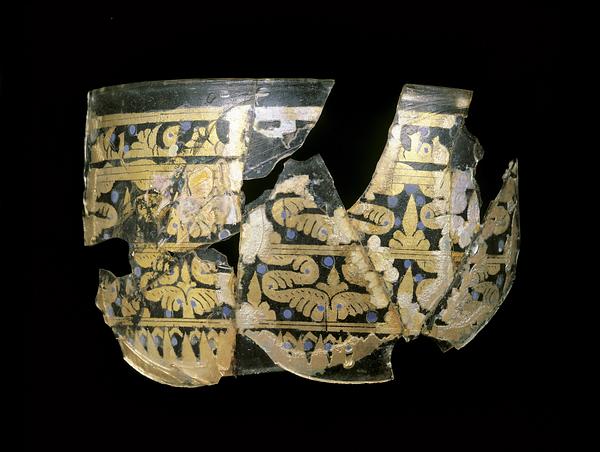Fragment of a glass bowl, decorated with gold and blue enamel between two layers of glass. (Sandwich glass)
Syria or Iran; 10th century
H: 8.5 cm
The decoration was created by first applying gold and blue enamel to the inside of a glass bowl, after which a second glass bowl was blown into the first, encapsulating the decoration in the glass.
Sandwich glass of this type is known from both the Roman and Byzantine eras, but is extremely rare from the Islamic period.
The glass fragment bears a decoration of winged palmettes and a Kufi inscription that dates it to the 10th century. As such, it also provides a key to dating other Islamic glass of this type.
Inv. no. 4/1987
Published in:
Marian Wenzel: “Islamic gold sandwich glass: some fragments in the David Collection, Copenhagen” in Journal of the Royal Asiatic Society, 1, 1988, pp. 45-72;
Kjeld von Folsach: Islamic art. The David Collection, Copenhagen 1990, cat.no. 229;
Kjeld von Folsach, Torben Lundbæk and Peder Mortensen (eds.): Sultan, Shah and Great Mughal: the history and culture of the Islamic world, The National Museum, Copenhagen 1996, cat.no. 143;
Stefano Carboni and David Whitehouse: Glass of the Sultans, Corning Museum of Glass, New York 2001, cat.no. 110;
Kjeld von Folsach: Art from the World of Islam in The David Collection, Copenhagen 2001, cat.no. 325;
Kjeld von Folsach: Flora islamica: plantemotiver i islamisk kunst, Davids Samling, København 2013, cat.no. 12;
